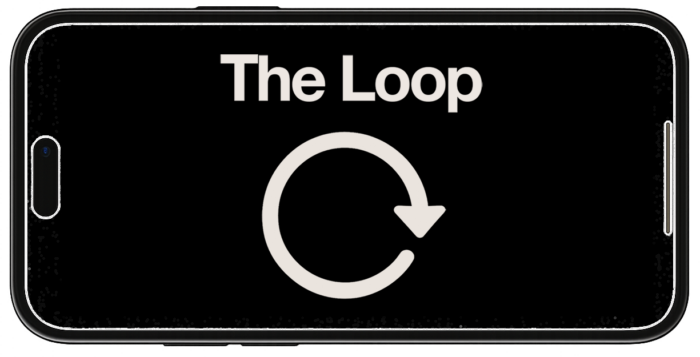If your brand has an international audience, one challenge can be serving ads in the user’s primary language. That challenge is significantly reduced with the launch of Dynamic Language Optimization.
Let’s take a closer look at what Dynamic Language Optimization is and how you might use it…
What is Dynamic Language Optimization?
Until now, advertising to a universal audience meant one of two things: 1) Lots of manual work or 2) Ignore it and focus on a single language.
To account for multiple languages, you’d need to create multiple ad sets — one for each language…

You’d then create a separate ad for each ad set. You’d go through the typical process of providing a link, thumbnail image, headline, text, link description, and call-to-action button for each ad.
But with Dynamic Language Optimization, you could theoretically use one ad set and one ad with up to six language variations. Facebook then automatically optimizes to show the right language variation of the ad to the right people.
There are two primary examples of when this would come in handy:
- Advertising to a single country that is dominated by two or more languages
- Advertising to multiple countries at a time
Dynamic Language Optimization Restrictions
Before we get to setting this up, there are a few restrictions that you should be aware of associated with Dynamic Language Optimization.
1. Objectives: You must use Traffic, Mobile App Installs, or Conversions objectives — at least for now.
2. Placements: Only Facebook News Feed (desktop and mobile), Instagram, and Audience Network are currently eligible.
3. Variations: Up to six total languages (the default language plus five variations) can be submitted.
4. Images: Only one image applied to all variations. Text in the image will not be translated.
5. Bulk Editing and Bulk Duplication: These aren’t supported when using Dynamic Language Optimization.
How to Set Up Dynamic Language Optimization
While creating your ad using one of the supported objectives, first build it using the default language. Know that if you reach someone whose primary language isn’t one of the variations you create, the default language is the version they’ll see.
If you have this feature, you’ll see a button for multiple languages…
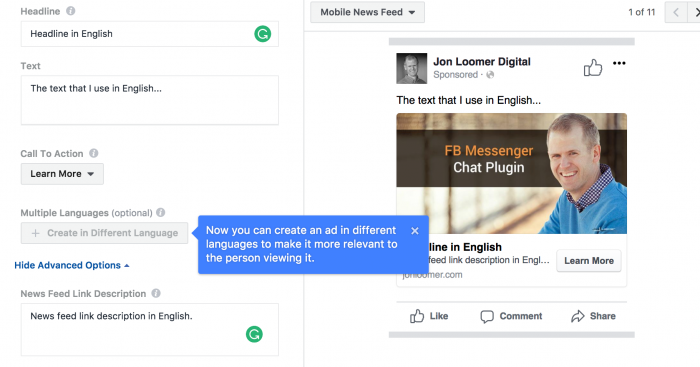
As mentioned earlier, this feature only supports certain placements…
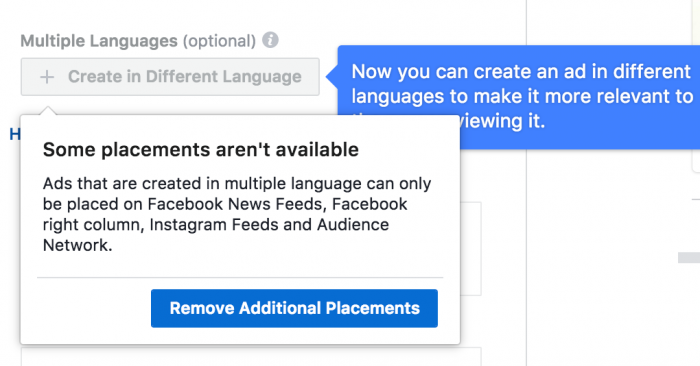
You could manually remove the placements that aren’t supported, but it’s easier to simply click the button to remove the additional placements.
Now the button to “Create in Different Language” will no longer be grayed out. Click it!
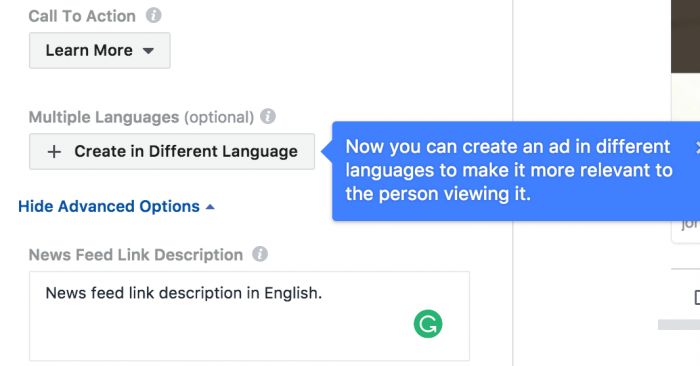
You can now submit the following information in up to five different languages:
- Website URL
- Headline
- Text
- News Feed Link Description
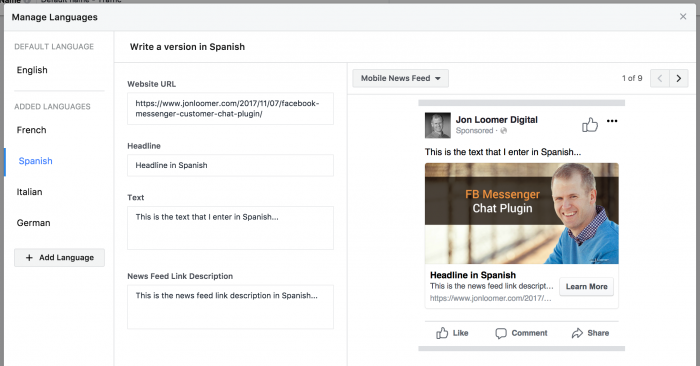
If you publish multiple versions of your articles based on language, you can submit a different URL for each language. Otherwise, use the same URL for each.
At the moment, this feature appears to be a bit buggy for me when I try to submit five variations in addition to the default language. The preview no longer works and I get an error that I’ve submitted too many links. Something to watch if you’re having issues.
How to View Results
So now the question becomes, “How did my ads perform by language?” You can sort this out within the ad reports.
Facebook says to choose “By Asset Type” under “Breakdown” when viewing the ads. It’s possible that I simply don’t have this yet because I haven’t used the feature. But it’s also possible that this actually falls under Dynamic Creative Assets.
Either way, it will look something like this…
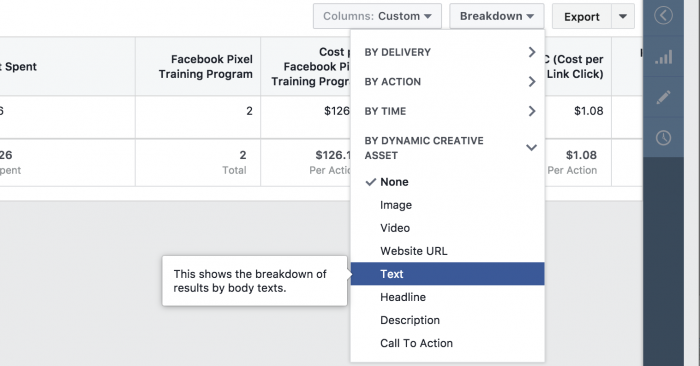
What should you do with these results? Well, you can learn how well you’re connecting with your audience depending on the language.
Is Dynamic Language Optimization for You?
This is a great feature. However, it’s unlikely that I’ll be using it soon.
Understand that you first need to have the resources to properly translate your ads into multiple languages. Do you have that?
Second, are you promoting a link? If so, it would make sense that the content on that page is also translated. Is it?
Finally, what happens when people comment in their native language? Do you have the resources to respond in that language?
Maybe you have these things in place. I don’t. But something to think about before moving forward with this feature.
Your Turn
Do you have Dynamic Language Optimization? Do you have a need for it?
Let me know in the comments below!

